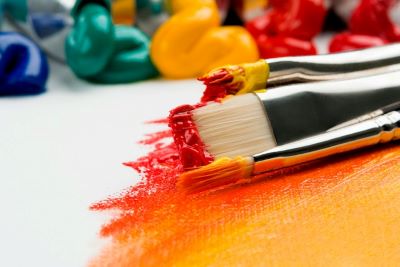Painting is an art form that allows for the expression of thoughts, emotions, and creativity on a canvas. Mastering this art requires understanding various techniques and tools. This article aims to guide aspiring and seasoned painters alike in refining their skills and enhancing their artistic expression.
Incorporating Technology in Art
In the modern era, technology plays a role even in traditional arts like painting. Artists are now exploring how technological advancements can benefit their craft.
For instance, solar generators are becoming a popular power source in studios, particularly for outdoor painters, allowing them to use electric tools without being tethered to a fixed power source.
Understanding Color Theory
Color theory is foundational in painting. It involves understanding how colors interact, how they can be mixed, and the impact they have on the viewer.
Knowledge of primary, secondary, and tertiary colors, as well as concepts like hue, saturation, and value, is essential for creating visually appealing works.
Brushwork Techniques
Brushwork is more than just applying paint to canvas; it’s a way to express texture, movement, and emotion. Techniques vary from broad, sweeping strokes to fine detailing.
Experimenting with different brush sizes and shapes can help painters develop their unique style and bring their visions to life.
The Importance of Composition
Composition refers to how elements are arranged on a canvas. Good composition guides the viewer’s eye across the artwork and creates a harmonious balance of elements.
Understanding the rule of thirds, symmetry, asymmetry, and the use of leading lines can greatly enhance the impact of a painting.
Exploring Different Mediums
There are various mediums available to painters, such as oil, acrylic, watercolor, and gouache. Each has its properties and techniques. For example, oil paints allow for rich, gradual blending, while acrylics are known for their quick drying time and versatility.
Mastering Light and Shadow
Understanding how light and shadow work is crucial in creating a sense of depth and realism. This involves learning about light sources, shading, and highlights.
The way light interacts with objects and how shadows are cast can add dimension and life to a painting.
Texture and Impasto Techniques
Texture in painting can be achieved through various methods like impasto, where paint is laid on thickly so that brush or palette knife marks are visible.
This technique adds a physical dimension to the work, creating a tactile and visually interesting surface.
The Role of Perspective
Perspective is key in creating a three-dimensional effect on a two-dimensional canvas. Techniques like linear perspective, where parallel lines seem to converge in the distance, help in achieving a realistic portrayal of space and depth.
Continuous Learning and Practice
The journey of a painter is one of continuous learning and practice. Attending workshops, studying the works of masters, and regular practice are essential for growth. Each painting is a step forward in mastering the canvas.
A Lifelong Journey
As we traverse through the myriad of techniques and styles in painting, it becomes evident that painting is not just a skill but a lifelong journey of discovery and expression.
The canvas is more than just a material; it’s a realm of infinite possibilities, where each brushstroke can speak volumes and every color can evoke emotions. In the hands of a dedicated artist, the canvas transforms into a portal to new worlds, perspectives, and stories, eternally waiting to be explored and shared.
